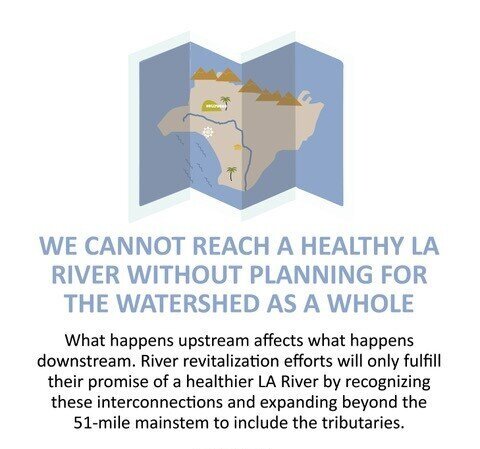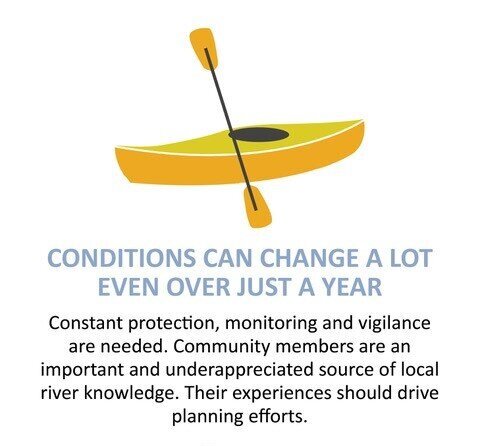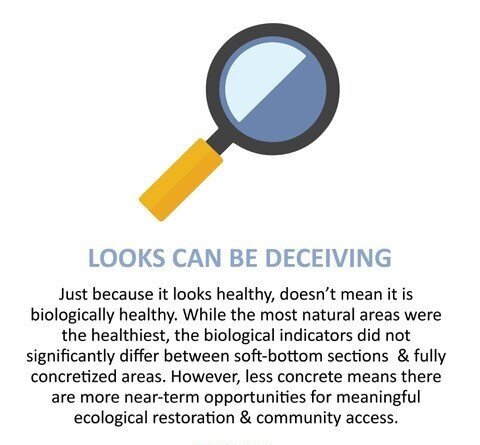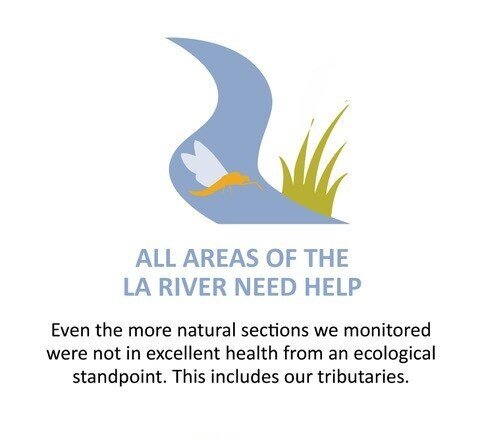Uniting Community & Ecology for a Resilient LA River
March 4, 2021RAFT Volunteers in the Glendale Narrows. Photo: William Durland & Lindsey Jurca
In January, Los Angeles County released an update to the LA River Master Plan (LARMPU), originally drafted in 1996, setting forth its vision for the future of the Los Angeles River. This is a once-in-a-generation opportunity to provide creative solutions to further opportunities for public access, community health, and ecological restoration while increasing our resilience in the face of climate change. While these aspirations align closely with our ambitions for the River, the LARMPU has failed to establish an actionable plan to achieve these goals. Instead, it prioritizes new amenities and man-made beautification of the River and its surrounding areas. Simply put, more than anything, we fear the LARMPU is a lost opportunity to reimagine a healthy, vibrant and resilient LA River that restores the ecological health of the river and provides badly needed green space and recreation areas to connect adjacent communities.
“We were attending meetings related to the LA River revitalization, and we felt discouraged by the lack of ecological and community input.”
So, what makes LA Waterkeeper an authority on the LA River? Since 2018 we, alongside a coalition of community groups and organizations on the LARMPU Steering Committee, have been engaged in a process to ensure environmental and community feedback is incorporated into the Plan. Together we have advocated community and environmental health go hand in hand. Rather than being treated as separate topics, conversations of ecology should be integrated with conversations about equity and climate to ensure a holistic, watershed-approach to restoring the River. And in 2018, to order to bridge community and ecology, we began working with volunteers to monitor and collect data on the ecological health of the LA River, through our River Assessment Fieldwork Team (RAFT). After two years of data collection, we are proud to present our findings in our RAFT Report! Our report presents our data from the 2018 and 2019 monitoring seasons and shares our findings and strategic recommendations for policy efforts focused on the River.
Read our RAFT Report Executive Summary.
What is RAFT?
Photo: William Durland & Lindsey Jurca
Since LA Waterkeeper’s founding in 1993, it’s been our mission to engage LA County’s diverse communities to monitor, protect, and restore our inland and coastal waterways. Over the years, we’ve engaged thousands of Angelenos to monitor the health of our local waterways -including our Los Angeles River. In 2018, we launched RAFT in response to ongoing river revitalization efforts that have failed to prioritize the river’s ecology and community’s connection with it.
Through RAFT, we trained over 100 community members in the California Rapid Bioassessment Protocol to monitor eight sites along the LA River and its tributaries. It provided community members with the opportunity to learn first-hand about the health of the Los Angeles River watershed through ecological analysis. Monitoring the LA River and its tributaries is vital to better understand how they’re changing, call for improvements in planning processes, and connect people with our waterways. In two years, our volunteers collected critical data and monitored water quality, habitat quality, and biological integrity throughout the LA River to help inform us on possible opportunities for restoration on the River.
Key Takeaways
Our findings show that the LA River watershed is struggling. However, the possibility of a healthy river is not farfetched. To address the root causes of river degradation, we must make watershed-level changes, connect with the surrounding communities, and treat the River as a river.
RAFT Recommendations
In order to connect Angelenos with a living Los Angeles River, we need our leaders to take a more community-oriented approach to ensure that ecological and neighborhood health and resiliency are protected. Our RAFT Report recommends any planning for the LA River to:
Pursue Comprehensive Planning & Governance
While the LARMPU is the most recent government-led plan focused on the River to be released, it is not the first. Current River planning is fragmented, with all efforts led by different agencies. Although the LARMPU does address the 51-mile corridor, it predominately focuses on river-adjacent development, and it is unknown how it will work in conjunction with all the other plans. To create cohesive River planning, we need to promote coordination between the various agencies and municipalities working on River restoration. Cohesive planning would then make a watershed approach much more feasible. We could address the symptomatic challenges that plague the River much more effectively.
Unite Community & Ecology
Repairing the river’s ecosystem is integral for community health and climate resilience. While green space such as community parks are important, indeed critical, there is also a need for greater access to blue space, meaning access to our waterways. We should make it easier for communities to visit their local waterways while maximizing the ecological potential of all segments of our waterways. But it is not enough to encourage people to recreate in our waterways. Access to the river means access to clean water and healthy ecosystems.
Treat the River as a River
We must also remember the health of the River, independent of how humans use it, is important in its own right. The LA River is a living waterway, and worth protecting. Through RAFT, we found meaning in monitoring the River first-hand and established a baseline for its health. None of our monitoring sites received scores indicating a healthy stream condition, and without regulatory oversight, the LA River will remain degraded for generations to come. Our findings underscore the need for a holistic and coordinated planning approach to LA River management to bring the River back to life. By establishing biological objectives or water quality baselines, we can have specific and measurable standards to help protect the LA River.
Foster Climate Resiliency
Efforts to restore our waterways should be carried out in conjunction with in-depth community coordination and stabilization efforts so that adjacent communities can enjoy healthier environments, without fear of displacement, and with the promise of economic benefit for local residents. We need river planning that considers equity, ecology, and climate as intersecting priorities to adequately address climate resiliency and prevent further disconnect between communities and their River. Environmental needs should not and do not conflict with community interests. As many Angeleno communities face environmental injustices and gentrification and displacement, we need planning that understands that ecological and community concerns are interwoven.
Download our complete RAFT findings & recommendations.
RAFT Findings and the LA River Master Plan Update
Unfortunately, most of what was discovered during the RAFT program is not reflected in the draft LA River Master Plan Update (LARMPU). The current Plan continues to treat the River as a flood channel, rather than a living ecosystem. It even goes out of its way to argue why concrete removal is not possible while proposing projects that would further bury the River under even more concrete. While some watershed analysis occurred as part of the planning process, the LARMPU takes a much narrower view of the River as a corridor. And despite fairly extensive community outreach that took place over the past 2.5 years, the draft Plan doesn’t reflect what community members said they wanted- a greater emphasis on ecological and community health. Finally, climate resiliency is relegated to an after-thought in the Plan, as is addressing the critical governance issues surrounding the River that only gets a minor mention. Luckily, there is still time for the County to course-correct to take advantage of this once-in-a-generation opportunity to reshape the future of the LA River.
Take Action and Make Your Voice Heard
The 60-day comment review period for the LA River Master Plan Update has been extended to May 13. Commenting is an opportunity to influence and make your voice heard by decision-makers. It is YOUR opportunity to point out issues, offer alternatives, and help decision-makers identify what you feel is a priority. LA Waterkeeper, along with a coalition of Steering Committee Members and other partners, has been diligently reviewing the latest draft to provide thorough analysis and recommendations. You can use our RAFT Report to make your own educated comments and share them with us and the County or you can endorse the Coalition's vision on the LARMPU.
A massive thank you to all our RAFT volunteers, Melissa von Mayrhauser, former LA Waterkeeper Watershed Programs Manager, and Lindsey Jurca, our report designer.









